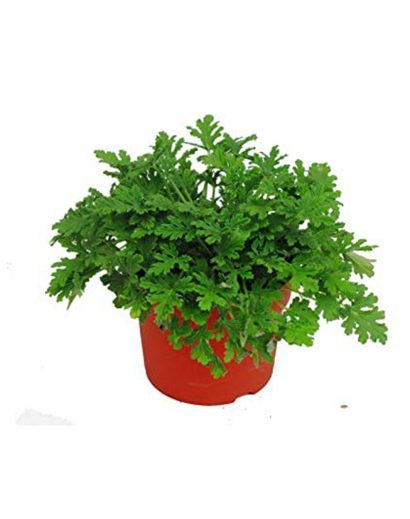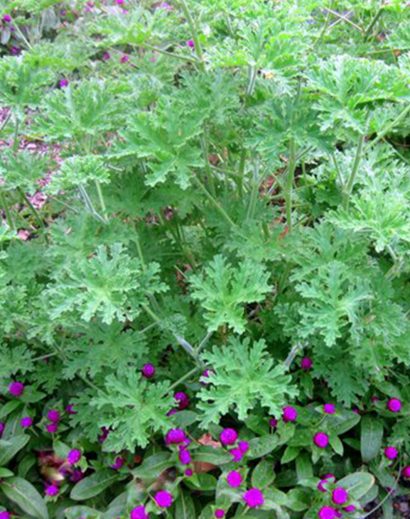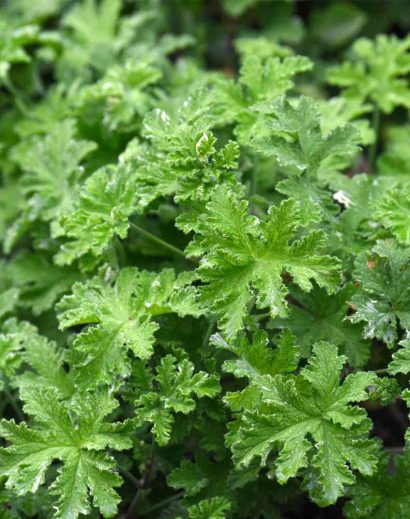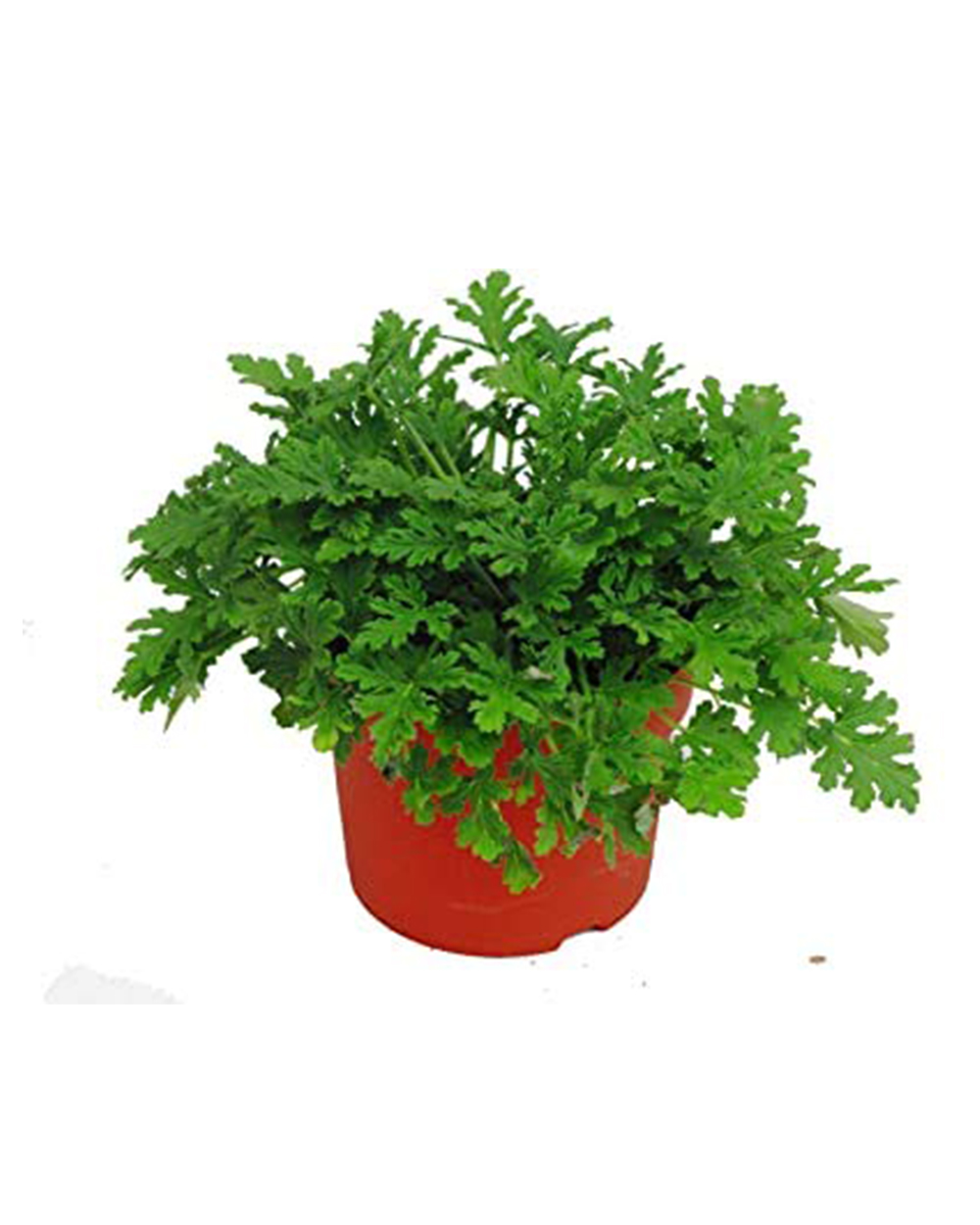The rose-scented geranium, scientifically known as Pelargonium graveolens, is a charming and fragrant herbaceous perennial plant that is prized for its delightful rose-like scent. Here’s a detailed description of its key features:
1. Growth Habit: Rose-scented geraniums typically grow as compact, bushy plants that reach a height of about 1 to 3 feet (30 to 90 cm). They have a mounding growth habit, with multiple stems emerging from the base.
2. Leaves: The leaves of the rose-scented geranium are one of its most distinctive features. They are deeply lobed and somewhat velvety to the touch. The leaves vary in color from dark green to slightly gray-green, depending on the cultivar. When you rub or crush the leaves, they release a strong, sweet, and unmistakable rose fragrance.
3. Flowers: While the primary attraction of the rose-scented geranium is its aromatic foliage, it also produces small clusters of five-petaled flowers. These flowers are typically pink or lavender in color and have a simple yet charming appearance. The blooms are not as showy as the leaves but add a subtle decorative touch.
4. Aroma: The defining characteristic of this geranium variety is its powerful rose scent. When you brush against the leaves or gently squeeze them, they emit a fragrance that closely resembles that of a rose flower. This aroma is why it’s highly valued for its aromatic properties.
5. Culinary and Medicinal Uses: The leaves of the rose-scented geranium are used in cooking and herbal remedies. They can be infused into teas, added to desserts, or used to flavor various dishes. Additionally, they are believed to have medicinal benefits, including anti-inflammatory and antimicrobial properties.
6. Ornamental Use: Rose-scented geraniums are not only practical but also ornamental. They are grown in gardens, containers, and hanging baskets, adding both fragrance and beauty to outdoor and indoor spaces. The contrast between the green foliage and the pink or lavender flowers can be quite appealing.
7. Varieties: There are several cultivated varieties of rose-scented geraniums, each with its own unique leaf shape, scent intensity, and growth habit. Some are known for their particularly strong rose fragrance, while others may have slight variations in leaf shape.
Overall, the rose-scented geranium is a versatile and attractive plant that combines the beauty of its foliage, the charm of its flowers, and the captivating aroma of roses. It can be used in various ways, from enhancing the sensory experience in gardens to providing flavor and fragrance in culinary and herbal applications.





Reviews
There are no reviews yet.